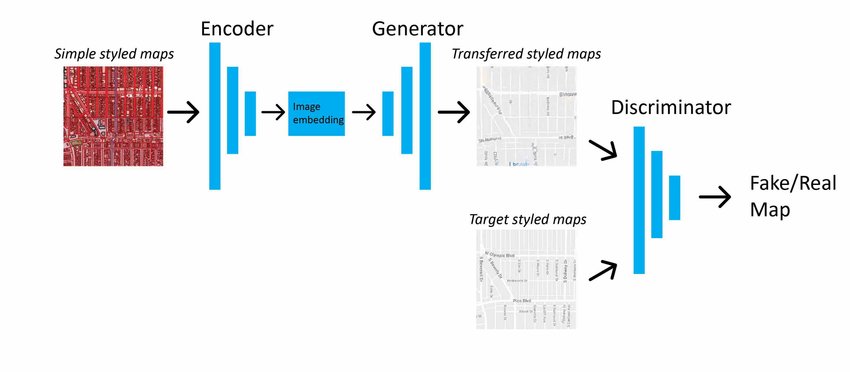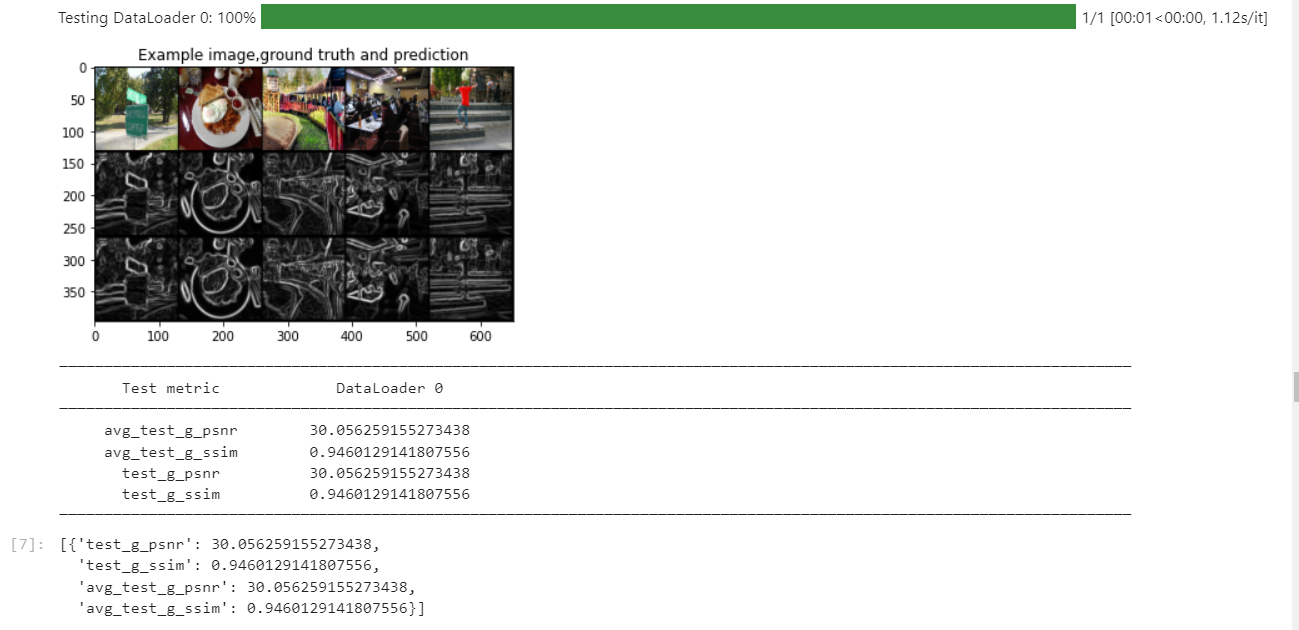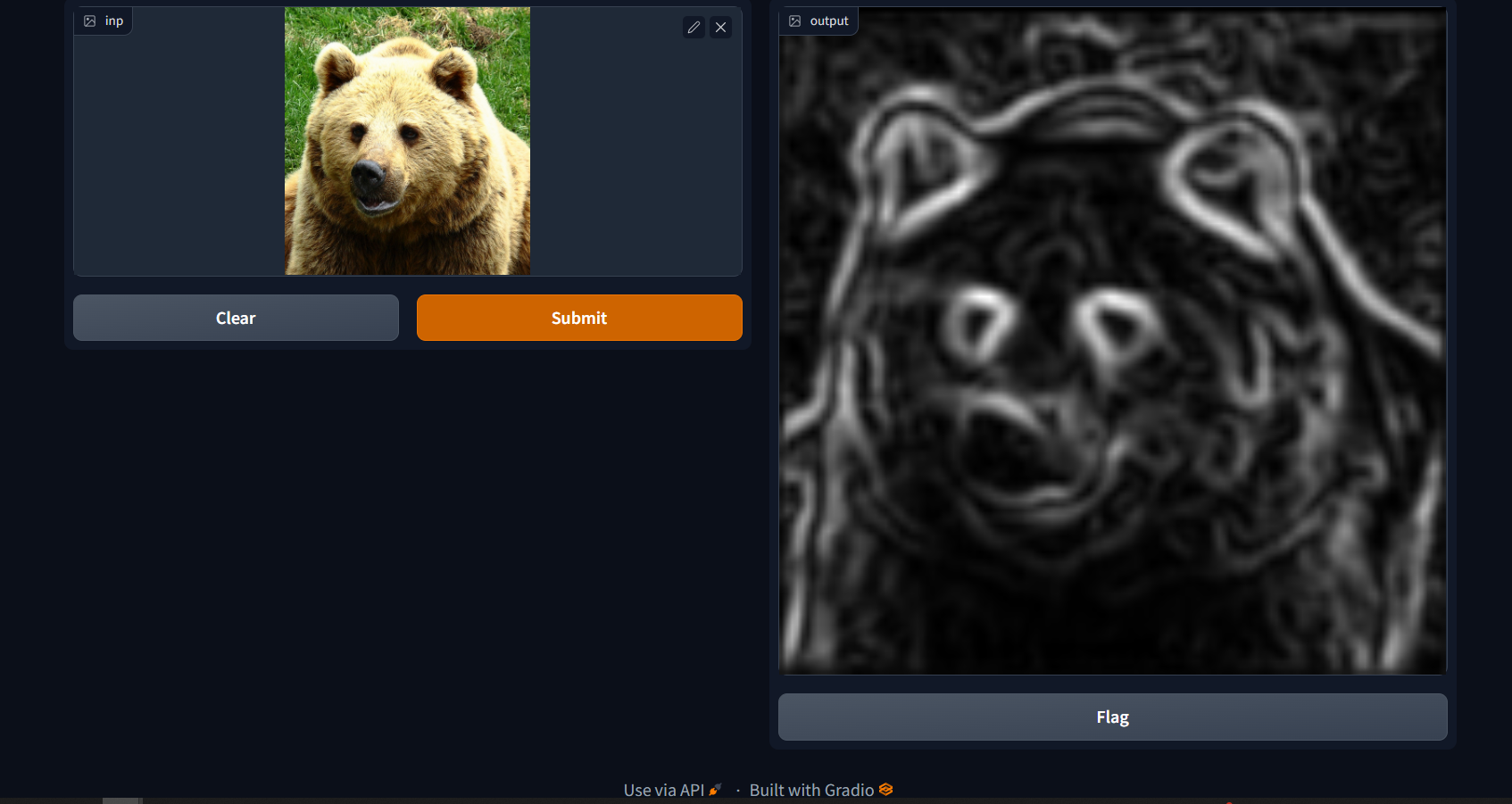To get started with this project:
Installing the libraries:
pip install -r requirements.txt
Creating the folder structure:
python setup.py
Download trained model from:
https://drive.google.com/file/d/1ja1ZPJsW-KW6_Jm7p9L5tkvmbx2t3aiN/view?usp=sharing
and place it in models subdirectory
The main driver of simple autoencoder notebook can be found:
simple_main.ipynb
The main driver of Pix2Pix notebook can be found:
main.ipynb
For a quick demo of the model in a web interface:
python demo_gradio.py
|---- README.md <- The top-level README for using this project.
|----data <- The directory for storing the data.
|----raw <- for storing original, immutable data dump.\
|----interim <- for storing transformed data.\
|----processed <- for storing canonical dataset for modelling.\
|----figures <- The directory for storing the figures and images.
|----models <- The directory for storing saved models.
|----src <- Python module for this project.
|----dataset <- Contains code for downloading, preparing, and loading dataset.\
|----models <-Contains pix2pix model architecture.\
|----experiment <- Contains code to perform training.\
|----testing <- Contains code to perform single image tests.\
|----main.ipynb <- Driver notebook for Pix2Pix.
|----simple_main.ipynb <- Driver notebook for Simple Autoencoder.
|----get_started.py <- Contains code to make folder structure for this project.
|----gradio_demo.py <- Web Interface for testing the model.
|----requirements.txt <- Libraries required for this project.
This project contains code for a simple 2-layered Autoencoder model and also contains code for a state of the art image-to -image translation model -Pix2Pix.
As I understand, the core of this task is to find an approximation to Sobel Filter using Deep Learning. Ideally, a learned kernel of the convolution network should be able to approximate this task well. Since Sobel Kernel Convolution is a simple task.
The first model is Autoencoder network with 2 layers of convolutions followed by 2 layers of deconvolution (to maintain the shape of the output image).
class Net(nn.Module):
def __init__(self):
super().__init__()
self.conv1 = nn.Conv2d(3, 16, 3)
self.batch_norm1=nn.BatchNorm2d(16)
self.conv2 = nn.Conv2d(16, 32, 3)
self.batch_norm2=nn.BatchNorm2d(32)
self.trans_conv1=torch.nn.ConvTranspose2d(32,16,3)
self.batch_norm3=nn.BatchNorm2d(16)
self.trans_conv2=torch.nn.ConvTranspose2d(16,1,3)
self.batch_norm4=nn.BatchNorm2d(1)
def forward(self, x):
x = self.conv1(x)
x= F.relu(self.batch_norm1(x))
x = self.conv2(x)
x= F.relu(self.batch_norm2(x))
x = self.trans_conv1(x)
x= F.relu(self.batch_norm3(x))
x = self.trans_conv2(x)
x= F.relu(self.batch_norm4(x))
return x
I also wanted to try state-of-the-art models for image translation: Pix2Pix for this task. As the Pix2Pix model is a conditional generative adversarial network used for image-to-image translation, it felt like this model would not only solve the task but can also be a powerful general-purpose model to derive any kind of filter of images.

The standard Pix2Pix architecture was used in this project, except the input channel and output channels were modified to take 3 channels as input and output 1 channel images. With my current hyperparameters, the model has converged quickly providing a very high structural similarity index measure (SSIM) and Peak signal to noise ratio (PSNR). However, there is room for further optimization. I have used Pytorch Lightning/Pytorch as my main library. The experiment was done on Cloud GPU platform - Paperspace on P5000 Single GPU.
The main dataset used for this project is the mini coco dataset from the repo Mini Coco dataset. Additionally, the code also provides an interface to use CIFAR-100 and Oxford IIIT Pets datasets.
The image of the dataset is first processed with grayscale conversion and the addition of gaussian blur. In the next step, the Sobel filter is applied. The input image is the RGB raw image while the output image is a grayscale Sobel-filtered image. The images are also resized to 64*64 for Autoencoder and 128*128 for the Pix2Pix model although the standard pix2pix model uses 256*256, hardware limitations were considered.

Testing result for the Autoencoder is given below, it has produced decent ssim, psnr values. The graphs also have converged well.
Test Loss: 0.05406247079372406
Test PSNR: 21.546340942382812
Test SSIM: 0.8205837607383728
For monitoring the experiments W&B (Weights and Bias) tool was used. The code for logging is disabled in this repo as it requires creating account and logging in.
The training graphs are public and can be found here W&B Training and Validation Grpahs.
The focus while monitoring graphs were values of generator and discriminator loss. Training and Validation PSNR and SSIM were the main focus for early stopping.
 The model appears to have converged well and is providing high SSIM and PSNR Values.
The model appears to have converged well and is providing high SSIM and PSNR Values.
Web interface for testing the model using demo_gradio.py
Examples for testing can be found in figures/test1.jpg

Autoencoder model struggled to generalize well with an random filter
Test Loss: 0.25272947549819946
Test PSNR: 10.065942764282227
Test SSIM: 0.1438533067703247
One of the primary challenges of using random filter, is finding the write optimization parameters which appears to change with random filters.
The Pix2Pix performed better but the image produced are not satisfactory. The main limitation I found while training this is hyperparameter optimization which can change with the filters and also judging from the output images, it can be hard can infer the general results of applying a certain random filter.
1.What if the image is really large or not of a standard size?
The images are resized to 6464 dimensions (128128 works too). If images are really large, random cropping can also be used.
2.What should occur at the edges of the image?
The Sobel filter is used for edge detection. It works by calculating the gradient of image intensity at each pixel within the image.
As for the frame of image itself, unless there is observable border, I have not noticed a edge of the image frame forming.
3.Are you using a fully convolutional architecture?
I am using autoencoder architecture whose layers include convolutional, convolutional transpose layers.
4.Are there optimizations built into your framework of choice (e.g. Pytorch) that can make this fast?
For making the training faster, network size, learning rate or batch size can be increased. Additionally Pytorch supports Multi GPU training but I have not used because of lack of hardware.
5.What if you wanted to optimize specifically for model size?
I have obsvered from experimentations that 2 layer convolution works better than single layer. Therefore isnt much of a leap with 3 layered network except for faster learning capabilites. Therefore with the view of hardware limitation, 2 layered convolution network was the most optimal for me.
6.How do you know when training is complete?
From combination of training and validation MSE loss, SSIM, PSNR graphs. This autoencoder model is observed to converge well.
7.What is the benefit of a deeper model in this case? When might there be a benefit for a deeper model (not with a sobel kernel but generally when thinking about image to image transformations)?
I have obsvered from experimentations that 2 layer convolution works better than single layer. Therefore isnt much of a leap with 3 layered network except for faster learning capabilites. Therefore, there is improvement with increasing the layers but diminishing outcomes after a certain point.
1.What if the image is really large or not of a standard size?
The images are resized to 128128 dimensions (256256 works too). Incase images are really large, cropping can also be performed.
2.What should occur at the edges of the image?
The Sobel filter is used for edge detection. It works by calculating the gradient of image intensity at each pixel within the image.
As for the frame of image itself, unless there is observable border, I have not noticed a edge of the image frame forming.
3.Are you using a fully convolutional architecture?
I am using PixPix2 model whose building blocks are convolution layers.
4.Are there optimizations built into your framework of choice (e.g. Pytorch) that can make this fast?
Optimization I used for this project include dropout, learning scheduler. For making the training faster, learning rate or batch size can be increased. Additionally Pytorch supports Multi GPU training but I have not used because of lack of hardware.
5.What if you wanted to optimize specifically for model size?
For larger models, large batch size can be limiting therefore, I have reduced the batch size. The model might perform well with lesser epochs and lower learning rates.
6.How do you know when training is complete?
Since GAN training is very unstable, I have relied on training and validation PSNR and SSIM values. Training is stopped when these values have stablized and converged.
7.What is the benefit of a deeper model in this case? When might there be a benefit for a deeper model (not with a sobel kernel but generally when thinking about image to image transformations)?
I have used convolutional Autoencoder as my first model, which didnt not produce high SSIM and PSNR values and also overfit on data. Pix2Pix is a deeper model, I have not noticed overfitting, it has produced high PSNR and SSIM values and converged quickly.


